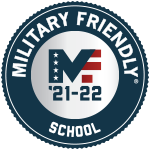Health and Safety Guidance/Core Responsibilities
Personal Safety Practices:
Physical Distancing
Avoiding close contact and maintaining space between one another is considered a best practice and required on the College’s campus to avoid exposure to the COVID-19 virus and mitigate its spread. Because employees can spread the virus before they know they are sick, it is important to stay away from other employees and avoid close contact whenever possible, even if an employee has no symptoms.
There are many circumstances when an employee may have even a greater risk of exposure to COVID-19. Defined by the CDC, close contact, is someone who was within six (6) feet of an infected person for a cumulative total of 15 minutes or more over a 24-hour period starting from two days before illness onset (or, for asymptomatic patients, two days prior to test specimen collection) until the time the patient is isolated.
Individual exposures are added together over a 24-hour period, for example, three 5-minute exposures would result in a total of 15 minutes’ exposure.
Physical distancing is especially important for employees who are at higher risk. Employees on campus must follow these physical distancing practices:
- Maintain a personal space of at least 6 feet (about 2 arms’ length) from other employees.
- Limit physical contact with other employees. Avoid in person meetings. Use online collaboration tools such as Skype for Business, Zoom and Microsoft TEAMS, email or the phone rather than face-to-face interaction.
- Do not gather in groups and avoid crowded places.
- Do not congregate in work rooms, copy rooms, or other areas where people socialize.
- Employees in individual offices should work with their office door shut.
- No one should enter a private office unless invited to do so.
- Avoid coming in contact with employees displaying symptoms of illness.
Please refer to the Social Distancing Policy 2.33 for more details.
Face masks/coverings
In accordance with the Commonwealth’s safety order issued on July 1, 2020, face masks/coverings (e.g., disposable masks or cloth face coverings) must be properly worn by all employees working on and off campus at all times in public settings (e.g., common workspaces, public spaces, hallways, stairwells, elevators, meeting rooms, classrooms, break-rooms, campus outdoor spaces, restrooms, etc.).
Faculty members teaching in a classroom have the choice of utilizing a plastic face shield, or in combination with the use of a face mask/covering, recognizing that the CDC does not recommend the use of face shields as a substitute for a face mask. However, the July 2020 Commonwealth order regarding the mandatory wearing of face masks in public also recognizes face shields to be in compliance.
If physical distancing is possible, employees working alone in private offices or laboratory environments and who are not otherwise engaged with any other employee, may remove their face masks/coverings while in such space. Appropriate use of face masks/coverings is important in minimizing risks to the wearers and those around them. COVID-19 can be spread to other employees even if an employee is asymptomatic and/or does not feel sick.
The face mask/covering is not a substitute for physical distancing.
Use and care of Face Masks/Coverings
- Putting on the face mask/covering
- Wash hands or use hand sanitizer prior to handling the face mask/covering.
- Ensure the face mask/covering fits over the nose and under the chin.
- Situate the face mask/covering properly with nose wire snug against the nose (when applicable).
- Tie straps behind the head and neck or loop around the ears.
- Throughout the process: Avoid touching the front of the face mask/covering.
- Taking off the face mask/covering
- Do not touch your eyes, nose, or mouth when removing the face mask/covering.
- When taking off the face mask/covering, loop your finger into the strap and pull the strap away from the ear, or untie the straps.
- Wash hands immediately after removing.
- Care, storage and laundering of cloth face coverings
- Keep face covering stored in a paper bag when not in use.
- Cloth face coverings may not be used longer than one day at a time and must be washed after use.
- Disinfecting method: Launder cloth face coverings with regular laundry detergent before first use and at the end of the work day.
- Disposal of face masks
- Keep face mask stored in a paper bag when not in use.
- Disposable face masks must not be used for more than one day and should be placed in a trash receptacle.
- Dispose of a face mask if it is visibly damaged (e.g., stretched ear loops, torn or punctured materials), dirty or visibly contaminated.
Gloves
Gloves are not necessary for general use and should not replace good hand hygiene. Washing your hands often with soap and hot water for a minimum of 20 seconds is considered the best practice for common everyday tasks. However, employees may elect to wear gloves while working on campus.
Goggles/Face Shields
Employees are not required to wear goggles or face shields as part of general activity on campus. Good hand hygiene and avoiding touching your face are generally sufficient for non-healthcare environments.
Faculty members teaching in a classroom have the choice of utilizing a plastic face shield, or in combination with a face mask/covering, recognizing that the CDC does not recommend the use of face shields as a substitute for a face mask. However, the July 2020 Commonwealth order regarding the mandatory wearing of face masks in public also recognizes face shields to be in compliance.
Personal Practices with Disinfection
College custodial crews will continue to clean offices and workspaces, classrooms and public spaces based on protocols developed with CDC guidance in mind, and employees should take additional care to wipe down commonly used surfaces after use.
It may not be possible for the College to provide product for personal use, but before an employee leaves any room in which they have been working or eating, it is recommended that the employee wipe down all work or eating areas with EPA-registered disinfectant. This includes a private workspace or any shared-space location or equipment (e.g., computers, A/V and other electrical equipment, copiers, desks and tables, chair arms, light switches, doorknobs, handles, etc.).
Employees should clear all desk and table surfaces in personal offices and workstations to aid in thorough cleaning. Washing your hands with soap and hot water for a minimum of 20 seconds or using a hand sanitizer that contains at least 60% alcohol is also effective after contacting commonly used surfaces.
Hand-washing
Wash your hands often with soap and hot water for a minimum of 20 seconds especially after you have been in a public place or used the restroom; after blowing your nose, coughing or sneezing; and before and after eating. If soap and water are not readily available, use a hand sanitizer that contains at least 60% alcohol, which must be allowed to dry to be effective. Cover all surfaces of your hands and hold them together until they feel dry. Avoid touching your eyes, nose and mouth with unwashed hands.
Coughing/Sneezing Hygiene
If you are in a private setting and not wearing your face mask/covering, remember to always cover your mouth and nose with a tissue when you cough or sneeze or use the inside of your elbow. Throw used tissues in the trash. Immediately wash your hands with soap and hot water for a minimum of 20 seconds. If soap and hot water are not readily available, clean your hands with a hand sanitizer that contains at least 60% alcohol.





